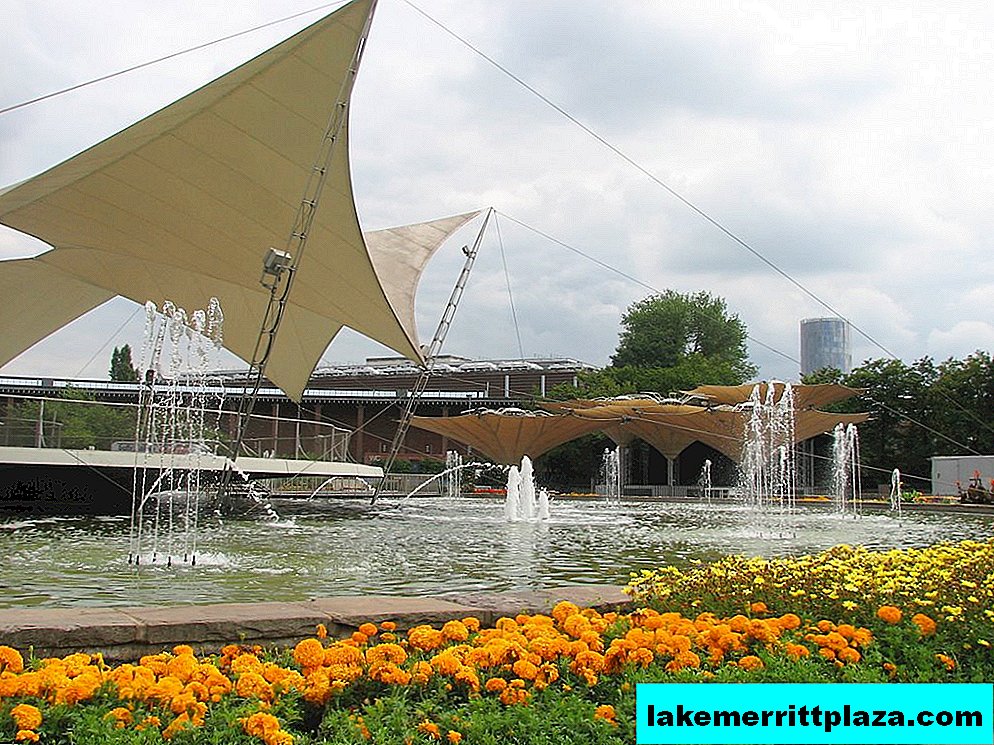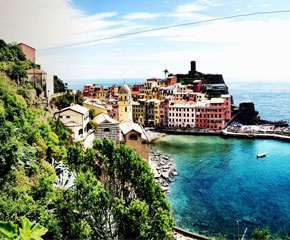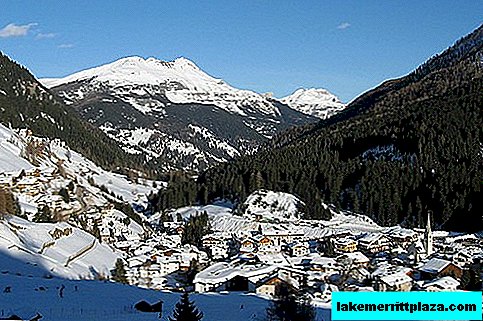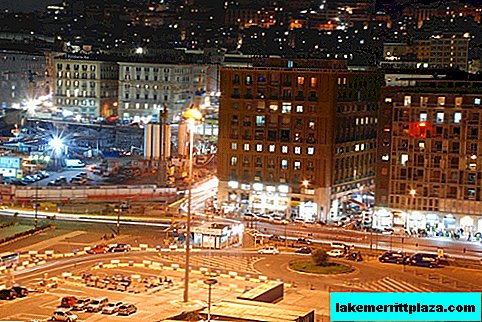Terme of the Emperor Caracalla (Terme di Caracalla) - a landmark located in Rome, striking in its scope and antiquity. Gigantic stone blocks, sprawling against the backdrop of pines of the Appian Way (Via Appia) and lush greenery, at the dawn of our era were the center of public life in the city. In modern times, the bath complex serves art, turning into a stage for the Roman opera.
Story

By the first century BC, Rome had big problems with water supply and elemental cleanliness, which did not prevent the policy from becoming a model of cleanliness. A senior official, Mark Agrippa (lat. Marcus Agrippa), spent tremendous money on the construction of aqueducts that delivered pure spring water to the capital.
Along with canals, fountains and water supply, baths began to appear in Rome, a visit to which was for a long time the prerogative of wealthy and powerful people. In terms of not only the body was cleansed, but also high-level meetings, adjusted for the informal setting.
Emperor Caracalla (Latin: Septimius Caracalla), son of Septimius Severus, in the 3rd century A.D. decided to endow the Italian capital with a colossal bath complex. The construction of the term began in 206 AD, in order to last 11 years. By 217, builders had mastered 11 hectares of Roman land between the hills of Celius and Aventinus (lat.Aventinus). The Baths of Caracalla received cyclopean dimensions, the courtyard: 400x400 m, the main bath complex: 150x200 m, and were designed for 1,500 visitors.
- We recommend a visit to the Baths of Caracalla with the archaeologist Elena Vyaznikova
The baths were located in the most prestigious area of Rome, although their main clientele lived in neighboring areas of average wealth. There were several elite complexes: the baths of Agrippa (Terme di Agrippa). The construction of the term was carried out so soundly and efficiently that by the 5th century AD they began to be considered another wonder of the world along with the pyramids of Egypt.

After two and a half centuries, baths in Rome were very successful. The triumph of construction ended with the fall of the Roman Empire. In the middle of the 6th century, frequent raids by the eastern Goths rendered the aqueduct nourishing the baths unusable. Over time, the buildings fell into decay, and land free from buildings partially turned into a city cemetery. Some sites were used for agricultural needs.
Excavations

The oblivious terms were rediscovered in the 16th century. Serious archaeological work on the study of this corner of Rome began in the 19th century. At the beginning of the 20th century, an extensive mitrium, a place of worship of the ancient deity Mithra, was discovered in the ruins of baths.
Modern Life - Roman Opera House
In the summer of 1937, the mayor of Rome, Piero Colonna, ordered the historical and archaeological complex to be placed at the disposal of the Roman Opera House (Teatro dell'Opera di Roma). An extensive outdoor scene, an amphitheater designed for 20 thousand spectators and impressive scenery, breathed a second life into the Baths of Caracalla. The summer theater season in the baths was interrupted during the Second World War, as well as in the 90s of the 20th century. Since 2001, after 10 years of restoration work, the complex began to serve art again.
For the summer of 2015 in the Terme of Caracalla, classical performances are planned: Turandot, Madame Butterfly, Bohemia. Serious works will be interspersed with modern programs: ballet based on the works of Pink Floyd, concerts by Elton John and Bob Dylan.
Description

The main building of Term Caracalla had a luxurious decoration: on the outside it was faced with marble, inside, more expensive slabs of marble, bronze finish of the frames, skillful imitation of glass on the windows were used. The entrance to the building is marked by two high exedra towers, well preserved to this day. In addition to services directly related to water bath procedures, the term included an extensive library.
It is noteworthy that the Baths of Caracalla had at their disposal a stadium for various kinds of entertaining performances. It was possible to enjoy the spectacles without leaving the bath. Also at the terms was a gymnastics school for boys, called in the ancient Greek manner, Palestra (Greek Παλαίστρα).
Plan
The water supply system of the term originated at the source of Aqua Marcia (Latin Acqua Marcia). A specially created aqueduct delivered clean water to the vaulted thermal system, where it was heated and distributed between the bath rooms. The rooms were built in one of the following types:
- frigidarium (lat. frigidarium) - rooms fenced with walls without a roof, in which visitors cooled after hot procedures;
- tepidarium (lat. tepidarium) - a room with hot, dry air (about 450), an analogue of the sauna;
- caldaria (lat. caldarium) - a large room in the center of which was a swimming pool with warm water. The caldary in the terms of Caracalla had a diameter of about 35 m, and was decorated with a row of columns supporting the roof;
- small rooms for taking individual baths.

The building of baths in 3-4 centuries BC It was richly decorated with mosaics depicting the exploits of various athletes and athletes. Fragments of the mosaic floor were discovered by archaeologists in the 19th century and are now in the Lateran Museum. Evidence was found that the bathhouses at their heyday themselves acted as an exhibition hall. Famous exhibits of the Vatican and Naples museums, such as the statue of Apollo Belvedere, the Farnese bull, sculptures of Ancient Rome, once decorated the emperors' restrooms in thermae.
How to get there

- Address: Viale delle Terme di Caracalla
- Metro: line B, stop Circo Massimo.
- Buses: Via No. Terme di Caracalla is connected by Routes 118, 160, 628, 671, 714; Via Baccelli is on route number 160.
- You can also order a taxi or rent a car.
- Ticket price: for opera and ballet, the ticket price ranges from 20 to 100 euros; The price of a ticket for celebrity concerts will be higher, from 70 to 250 euros, depending on the status of the performer.
- The official website of the theater: www.operaroma.it
- Working hours: daily, opening at 9:00, and closing - towards the end of daylight hours (in the winter at 16:30, in the spring at 17: 00-17: 30, in the summer at 19:30, in the autumn at 19: 00-18: 30).
- Combined ticket price to visit the Term Caracalla, Villa Quintile and the Cecilia Metella Mausoleum: 6 euros full, 3 euros - preferential.
- Official site historical landmark: www.archeorm.arti.beniculturali.it








